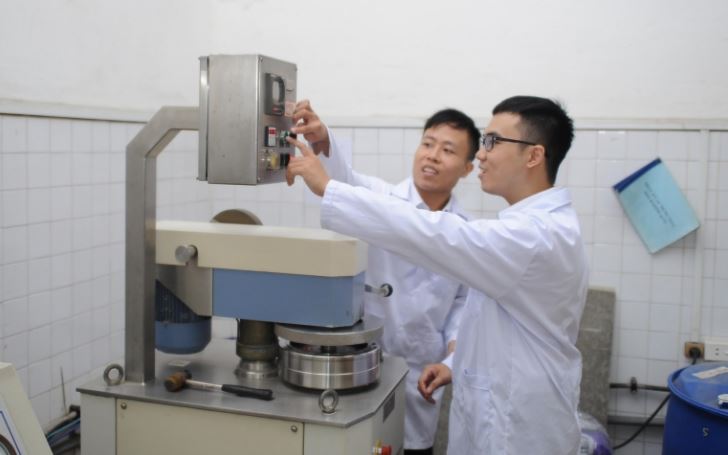To solve the above problems, producers apply synchronous solutions such as selecting and breeding material plants. In particular, some enterprises using microbial products and enzymes in wood peeling have significantly improved productivity and energy efficiency in this stage.
 Research on application of enzyme preparations to support the production of tissue paper by the Research Institute of Pulp and Paper Industry. Image source: Cong Thuong Newspaper
Research on application of enzyme preparations to support the production of tissue paper by the Research Institute of Pulp and Paper Industry. Image source: Cong Thuong NewspaperThis method is based on the principle of enzyme activities. Scientists will find and select microorganisms and enzymes that are able to break down compounds in the wood bark containing pectin, hemicellulose, cellulose or protein. Each type of microbial or enzyme product will have different effects on each type of wood material.
When axillary wood is immersed in a solution of enzymes and diffused enzymes, they weaken the bond between the wood and the bark and/or degrade the polymers of the phylum. Thereby it increases the efficiency of peeling wood. According to experimental applications, the enzyme has been used in the past, resulting in more thorough and faster peeling while reducing energy use by up to 80%.
Usually, the pulping process accounts for a high proportion of energy consumption, from 15-18% of the total energy consumption of the entire production process. In addition, the efficiency of the crushing process also greatly affects the quality of the paper and the overall efficiency of the line in general. Good handling of pulp at this stage can significantly reduce energy use, help reduce emissions and ensure environmental factors.
According to the content of the research, scientists have synthesized a grinding aid enzyme preparation consisting of a mixture of cellulase and xylanase enzymes from heat-resistant/thermophilic bacteria/ actinomycetes. On that basis, apply the above technology to test the tissue paper production line with a scale of over 3,000 tons/year.
The actual test results showed that the application of enzyme products of the study reduced the power consumption by 10.8% in the grinding process. At the same time, increasing the speed of the machine by 5.09%, increasing the pulp grinding rate by 30SR; and especially reduce the draining time of pulp by nearly 24%, thereby increasing machine efficiency and improving overall line efficiency.
Currently, manufacturers are gradually shifting to replacing chlorine and chlorine-containing compounds with enzyme agents in this process. According to Dr. Dieu, many commercial cellulase enzymes have been produced and used together with chemicals to improve the efficiency of the deinking process for waste paper. Thereby enhancing the ink removal efficiency to 24.6% and improving some physical properties of the pulp.
Although it is still difficult to apply new technology, the pressure to protect the environment according to Vietnam's legal regulations that businesses are required to comply with is increasing. That requires businesses to choose to apply biotechnology to the paper production process, from pre-treatment of materials to production stages and improve recycling efficiency. Enzyme technology is highly appreciated for improving environmentally friendly production processes and reducing emissions. This is the direction that manufacturers are implementing, Dr. Duong Xuan Dieu commented.
Ha Tran

 Vietnam - UK cooperate for sustainable development
Vietnam - UK cooperate for sustainable development
 Vietnam, Japan sign a Memorandum of Understanding on low-carbon growth
Vietnam, Japan sign a Memorandum of Understanding on low-carbon growth
 Increasing solutions in response to climate change
Increasing solutions in response to climate change
 Realizing vision towards sustainable green agriculture development
Realizing vision towards sustainable green agriculture development
 WWF-Vietnam calls to reduce plastic waste
WWF-Vietnam calls to reduce plastic waste
 Promoting ASEAN cooperation towards sustainable development of mineral exploitation
Promoting ASEAN cooperation towards sustainable development of mineral exploitation
 Developing forests in coastal areas in response to climate change
Developing forests in coastal areas in response to climate change
 Application of enzymes to improve efficiency in paper production
Application of enzymes to improve efficiency in paper production